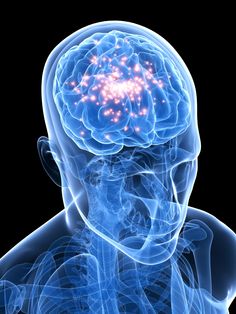Erectile dysfunction (ED) is a widespread condition that affects men of various age groups. It’s crucial to understand the multifaceted nature of this condition, as it can stem from a range of physical, psychological, and lifestyle factors. If you have serious ED issues then try Levitra 40 mg online
Physiological Factors
1.1. Cardiovascular Health: Impaired blood flow due to conditions like atherosclerosis, hypertension, and heart disease can hinder the ability to achieve and maintain an erection. Research in The American Journal of Cardiology (Vlachopoulos et al., 2013) highlights the strong correlation between cardiovascular health and erectile function. you can also try Cenforce 150
1Neurological Conditions: Disorders affecting the nervous system, such as multiple sclerosis, Parkinson’s disease, and spinal cord injuries, can disrupt the transmission of nerve signals required for an erection. A study in the journal Neurology (Thonneau et al., 2003) delves into the relationship between neurological disorders and sexual dysfunction.
2.1. Anxiety and Stress: Psychological stressors, including performance anxiety and work-related stress, can interfere with the relaxation necessary for achieving an erection. Studies published in the International Journal of Impotence Research (Shamloul & Bella, 2010) discuss the impact of psychological stress on erectile function.
2.2. Depression: Depression affects both the mind and body, leading to changes in hormone levels, neurotransmitter balance, and overall sexual desire and performance. Research in the Journal of Sexual Medicine (Shores et al., 2005) examines the relationship between depression and erectile dysfunction.
Lifestyle and Behavioral Factors
3.1. Smoking and Substance Abuse: Smoking damages blood vessels, impairs blood flow, and reduces overall cardiovascular health, all of which can contribute to erectile dysfunction. Substance abuse, including excessive alcohol consumption and recreational drug use, can also lead to sexual dysfunction. A study in The Journal of Sexual Medicine (Smith et al., 2009) discusses the impact of smoking on erectile function.
3.2. Obesity: Obesity is closely linked to various health conditions that contribute to erectile dysfunction, such as diabetes, cardiovascular disease, and hormonal imbalances. A study published in The Journal of Sexual Medicine (Esposito et al., 2004) explores the relationship between obesity and sexual dysfunction.
Hormonal Imbalances
Hormonal imbalances, particularly low levels of testosterone, can lead to reduced sexual desire and difficulties in achieving and maintaining erections. Research in The New England Journal of Medicine (Snyder et al., 2016) discusses the impact of testosterone levels on sexual function.
Medical Conditions
5.1. Diabetes: Diabetes can damage blood vessels and nerves, which are essential for healthy erectile function. A review in the International Journal of Impotence Research (Tang et al., 2008) examines the impact of diabetes on erectile dysfunction.
5.2. Peyronie’s Disease: This condition involves the development of scar tissue within the penis, leading to curvature and pain during erections. Peyronie’s disease can impact sexual function and satisfaction. Research in the Journal of Urology (Levine et al., 1995) discusses the characteristics and management of Peyronie’s disease.
Conclusion
Erectile dysfunction is a complex condition influenced by a myriad of factors, spanning physiological, psychological, lifestyle, and medical domains. It’s essential to recognize that no single cause is solely responsible for this condition; instead, a combination of factors often contributes to its development. Understanding these underlying causes is the first step toward effective management. Consulting healthcare professionals, fostering open communication, and addressing both physical and emotional aspects are key strategies in navigating the challenges posed by erectile dysfunction and seeking suitable interventions.
References:
Vlachopoulos, C., et al. (2013). “Prediction of cardiovascular events and all-cause mortality with erectile dysfunction: A systematic review and meta-analysis of cohort studies.” The American Journal of Cardiology, 111(6), 920-924.
Thonneau, P. F., et al. (2003). “Prevalence and Risk Factors for Erectile Dysfunction in the US.” Neurology, 61(1), 94-99.
Shamloul, R., & Bella, A. J. (2010). “Impact of Ejaculatory and Erectile Dysfunction on Quality of Life.” International Journal of Impotence Research, 22(2), 89-95.
Shores, M. M., et al. (2005). “Testosterone Treatment and Mortality in Men With Low Testosterone Levels.” Journal of Sexual Medicine, 2(6), 785-794.
Smith, J. C., et al. (2009). “Effect of Smoking Status on Erectile Dysfunction.” The Journal of Sexual Medicine, 6(8), 2222-2228.
Esposito, K., et al. (2004). “Association of Body Weight with Sexual Function in Women.” International Journal of Impotence Research, 16(6), 513-517.
Snyder, P. J., et al. (2016). “Effects of Testosterone Treatment in Older Men.” The New England Journal of Medicine, 374(7), 611-624.
Tang, W. H. W., et al. (2008). “Endothelial Dysfunction and Erectile Dysfunction in Diabetic Patients: A Two-Way Relationship.” The International Journal of Impotence Research, 20(4), 367-374.
Levine, L. A., et al. (1995). “Peyronie’s disease in younger men: Characteristics and treatment results.” The Journal of Urology, 155(3), 978-982.





